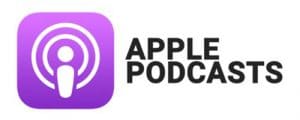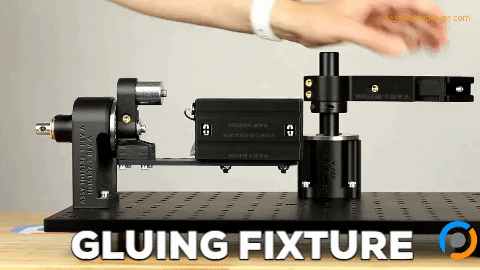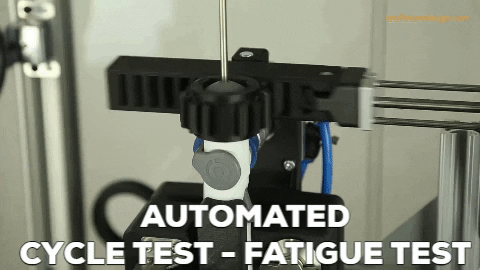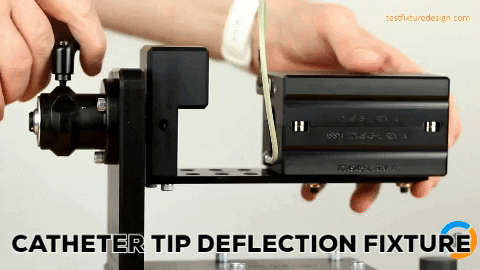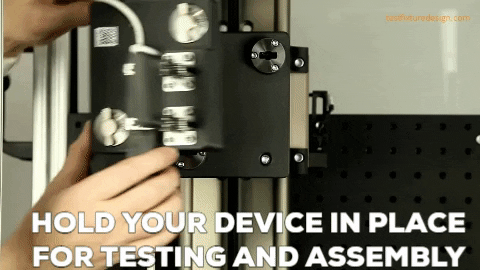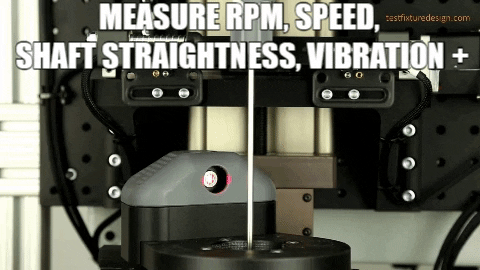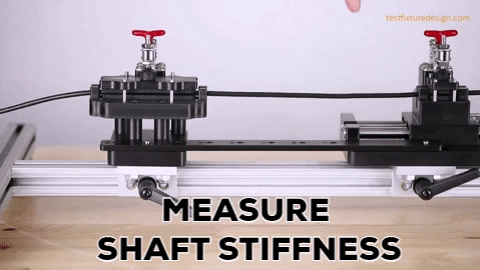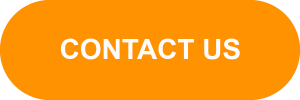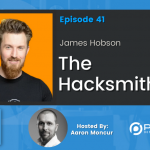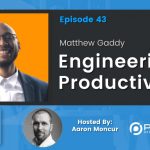Devon Newman The Importance of Design Intent in CAD Modeling, SOLIDWORKSsecrets.com
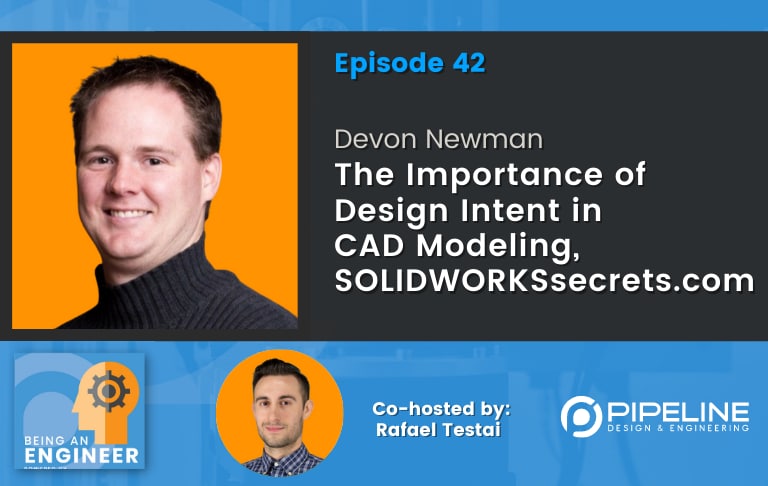
Who is Devon Newman?
Devon Newman is a Mechanical Engineer with a demonstrated history of product design. Skilled in SolidWorks, ANSYS, and Manufacturing. Devon has a master’s focus in Mechanical Engineering from the University of Utah and has used SolidWorks as a result, he develop a wide range of products; from pipeline inspection tools in the oil and gas industry to electromechanical assemblies, consumer products, and cooling systems.
Meanwhile, Devon is most known for his website, SOLIDWORKSsecrets.com, in which he has developed SolidWorks training classes. You certainly may have seen some of his ads on your social media feed.
EXPAND TO VIEW EPISODE TRANSCRIPTION
SUMMARY KEYWORDS
solidworks, design, product, ads, wanted, learn, model, work, people, create, geometry, group, change, scratch, engineer, projects, videos, platforms, update, find
SPEAKERS
Presenter, Rafael Testai, Aaron Moncur, Devon Newman
Presenter 00:00
The being an engineer podcast is a repository for industry knowledge and a tool through which engineers learn about and connect with relevant companies, technologies, people, resources and opportunities. Enjoy the show.
Devon Newman 00:16
You want to make sure that when you’re building a CAD model, that you give yourself flexibility in that design. And in that model, where as new requirements come up, or new features are requested, that you’re able to quickly adapt your existing model to incorporate those features and changes. Rather than having to start from scratch every time you need to tweak your design a little bit.
Rafael Testai 00:52
All right, everyone, welcome to the being an engineer show with your co host, Rafael Testai And with Devon Newman. He’s a mechanical engineer with a demonstrated history of product design his skill in SolidWorks, and Cs and manufacturing, his master’s of focus in mechanical engineering from the University of Utah. And as you solo rocks to the wellbore, a wide range of products from pipeline inspection tools in the oil and gas industry, electromechanical assemblies, consumer products and cooling systems. But Devon is most known for his website, SolidWorks secrets.com, which you can find in the description of the podcast, in which he has developed SolidWorks training classes, you may also have seen him across your social media feed. So Devon, welcome to the show.
Devon Newman 01:40
Thank you for having me, Rafael. It’s a pleasure to be here.
Rafael Testai 01:43
Quick thing. Sorry to interup. it’s, there’s a lot of wind does pick it up quite a bit. Yeah. So how did you choose? Or how did you know that you were going to be an engineer,
Devon Newman 01:55
I grew up in a family where there was a lot of tinkering and problem solving. My grandfather was an electronics engineer, and always had some type of a project going on in his basement where he was designing or building something. And so that creativity just kind of influenced me and and what I wanted to do,
Rafael Testai 02:15
Okay, and what are some projects that you can think of that really stuck with you?
Devon Newman 02:22
One of the projects that they like to do, every year around Christmas time, there’s what’s called the festival of trees, where people would decorate Christmas trees and donate them for charity. And my dad and grandpa would work on a tree that was not an actual tree, but they built out of wood, a marble track that looked like a tree. And there was a lot of creativity and fun design that went into something like that.
Rafael Testai 02:49
Okay, well, I want to give some context to our conversation. And how I first heard about you is because I cannot stop seeing your Solrock secrets ads on my Instagram feed. They were super engaging. And one of your ads goes like, Hey, do you want to make cool stuff and turn your ideas into reality? Once you think it, you can design it, and then you can make it. So when I heard you say that I was like, I need to take this course. And you also said that learn the software without selling your kidney, which I thought was pretty hilarious. So my question is, how did you produce these kinds of ads? They’re so well produced? Could you take us a little bit behind the scenes of making the ads?
Devon Newman 03:31
Sure, I can’t take too much credit for the ads. My cousin is my partner in this endeavor. He doesn’t have engineering or SolidWorks background. But he has done a lot of tutorial courses for other softwares and has done a lot of video creation and editing in the past. And so he was really the mastermind behind how the videos were put together, how they were edited and presented. It’s just my ugly face on there.
Rafael Testai 03:59
That same sense of humor. So learn SolidWorks without selling your kidney. I see. So how what other projects has he worked on? You mentioned that he he specializes in making videos, is that right?
Devon Newman 04:14
He does a lot of different things. He was kind of a pioneer in the drone videography field. So he’s been flying drones for as long as they’ve been around and has created a lot of tutorials for how to get good cinematic quality shots out of your drone, and then how to edit those shots. And, you know, he knew that I worked on SolidWorks and kind of persuaded me to create a similar type of course, but targeted more for the engineers that are wanting to learn SolidWorks where he’s targeting the photographers and videographers that are wanting to learn how to get good shots out of drones and how to edit those shots into cool videos.
Rafael Testai 04:52
Right on. So who wrote this script of your ads?
Devon Newman 04:56
That was collaborative with he and I
Rafael Testai 04:59
Okay, that, I’m only going to ask this question because I seek to understand the other side of the coin, one can find solarize classes in LinkedIn learning my solidworks.com, Skillshare, Udemy. What made you say, You know what, I’m going to build my own website and host my own SolidWorks classes, instead of putting your content on already established platforms that already have SEO, and can probably bring you a funnel of students without you having to advertise much?
Devon Newman 05:30
That’s a really good question, I think there’s a couple of different factors that kind of pushed us in the direction that we went. First of all, I wanted to have more control over the content, the presentation, the advertising, as well, as you know, have a little more ownership of, of the group that gets created as a result of of students joining the course, I wanted it to be more of a group that is somewhat isolated, independent of of any of those other platforms, where people who buy the course feel like they’re actually joining a community community that’s interested in SolidWorks, and designing projects.
Rafael Testai 06:09
So to my understanding, a one after one purchases, your class you’re welcomed into a community is like a Facebook group.
Devon Newman 06:18
Yeah, that’s, that’s the main part of it. There’s a Facebook group that is exclusive to students. And there’s a lot of feedback and questions and opportunity for learning within that Facebook community.
Rafael Testai 06:30
So I guess it’s a private group, right? It is,
Devon Newman 06:33
yeah. And, you know, we certainly could have offered our courses on on any of those platforms you mentioned, we also could have put the courses directly on YouTube and given them away for free. But we wanted people to feel like they were enrolling in something that was more structured, and was more dedicated to helping them learn, where they didn’t feel like they were quite on their own. It also gives us an opportunity to opportunity to interact more directly, you know, respond quicker to feedback and questions and concerns, where if we were on those other platforms, we would be subject to varying and changing terms and conditions and policies. And we just didn’t want to be restricted in how we present our material and how we interact with the students.
Rafael Testai 07:16
In how many people are in your Facebook group?
Devon Newman 07:20
I’d rather not say, Okay, it’s not a few. But
Rafael Testai 07:25
okay, because I’m part of a couple of also Facebook and LinkedIn groups for SolidWorks users. How is the dynamic on your facebook group different from those other Facebook groups?
Devon Newman 07:37
Well, if I’m assuming, let me back up. So I’m in several of those groups as well, where they don’t really have restrictions on who can join. And then those groups that I’m familiar with, which may be the same ones that you’re talking about, and maybe you’re in different groups, but the groups that I’m a part of, are just full of garbage, really, it’s people wanting you to disappear. It’s one it’s, wow, I’m stuttering, here, it’s people wanting you to subscribe to their YouTube channel, or it’s spam, or it’s, you know, not useful stuff, or questions that don’t really apply to SolidWorks. And by having a group with restricted access, we’re able to get people that actually want to be there actually want to contribute to the topics that are appropriate for the group. You don’t get spammed with offers and, and useless information.
Rafael Testai 08:27
I absolutely understand I can relate. And I think that’s the principle of having skin in the game, they’ve invested in buying the course. And you’re surrounded by a room or a group full of people that have already also invested. Okay.
Devon Newman 08:43
Well, works. SolidWorks is such a broad tool, there’s so many different things that you can do with it, you can’t create a training course that covers everything that SolidWorks has to offer. And so by having the the exclusive community you’re able to provide more instruction, you’re able to give more value to those that that purchase the course and go through the course and you know, help them learn more than what you can offer in a couple of hours of video tutorials.
Rafael Testai 09:10
Understand talking again about solid work secrets.com Your website, would you say that after you had the help in creating the video content? Are you a one man show right now? Or how’s that work behind the scenes? I’m curious.
Devon Newman 09:26
I wouldn’t say it’s a one man show that would be giving me way too much credit. So we have a person who’s very familiar with Facebook ads, how to target those ads to people who are actually potentially interested in SolidWorks. You know, there’s a lot that goes into presenting this material to people that’s well beyond my capabilities. You know, I’m a mechanical design engineer that knows SolidWorks really well. But there’s a lot of other things that I don’t know well, that are required in order to put this this content out there for people who may actually You’d be looking for it. So it’s certainly not a one man show.
Rafael Testai 10:03
That’s very well said, when I saw your whole website, everything is put together, I thought to myself, wow, this guy, not only he’s a really good at SolidWorks and mechanical design engineering, but his marketing skills are superb, because your ads are super engaging. But even if you didn’t create them, I have to give you credit for putting the right team together to create it for you.
Devon Newman 10:25
Well, thank you, yeah, my marketing skills are not at all, whatever you just described them to be. So I won’t take credit for that. But yes, we do have, I guess there’s three of us. So myself and my cousin, and then our ad guy, and, you know, we each bring a very unique perspective and skill set that, that allows us to get this content in front of people. Maybe too much. So as you mentioned, you know, a lot of people’s may be seeing too much of me on Facebook and Instagram, but, you know, we’re able to find a lot of people that are looking for an opportunity to learn SolidWorks and, and don’t want to go through the effort of, of learning through what YouTube has to offer or these other platforms that are not quite as structured, or or oriented towards, towards quickly learning.
Rafael Testai 11:13
Would you say that you and your cousin are like cofounders of this? Yeah. Yep. And the ad guys, maybe someone they hired not a co founder? Right? Correct. Okay, how does one go about finding finding an ad guy? What do you even look for that?
Devon Newman 11:30
I was fortunate that I didn’t have to worry about it. Because as I mentioned, my cousin has done this for, you know, a variety of other types of tutorials, and has a lot of the structure set up? Well, we had to tailor some things, obviously, for SolidWorks. And for the the community that would be interested in SolidWorks. You know, there’s, there’s a lot of things that would be appealing to people who are trying to take videos and pictures from a drone that the engineering community is not going to care about. And so, you know, tuning and tailoring the message, you know, requires a lot of iteration. And we haven’t done that successfully, every time. Some of our ads have fallen flat, so to speak, where we didn’t quite reach the intended audience or or didn’t, didn’t present what we were trying to present clearly enough for them. And so there’s a lot of iteration and a lot of learning that that goes with, with the ad side, the marketing side of it.
Rafael Testai 12:26
Okay, how much are your classes for SolidWorks.
Devon Newman 12:30
So we offer the Crash Course for $47. And then through the checkout process, there’s there’s the checkout funnel that gives opportunities for people to add on additional modules and courses that are, that are part of the are part of what we offer
Rafael Testai 12:47
already $7. That’s good price. I think, in comparison to what some other solid work trainings out there are in the hundreds of dollars, and I think 1000s If I’m not mistaken, is that right?
Devon Newman 12:59
I’m sure you can spend a whole lot of money on SolidWorks training, especially if you go through the the SolidWorks, distributors and resellers.
Rafael Testai 13:08
Okay, I’m trying to put all the pieces together. So you have the technical person that has the technical expertise in yourself, you have your cousin that does the camera and the advertising and found that this contractor for the advertising, but what about the software components? So let’s talk a little bit about that. So if somebody wants to create their own content online, and make educational classes hosted on their own website, kind of like do that, but for different subjects, like perhaps how to use another software to acquire another skill set, because I think that maybe the market for SolidWorks is already saturated with very competent teachers like yourself. So are there any specific hosting platforms, software’s or plugins that you can add to your website that you recommend for people who also have a small team?
Devon Newman 14:00
Sure. So our courses are hosted on teachable, we don’t host them directly on our site teachable is a really nice platform that allows you to present your videos in a in a nice interface. All of the you know, pause, skip progress reporting, all of that stuff. It didn’t make sense for us to rebuild that from scratch, you know, teachable, certainly not perfect. It has some quirks and some challenges, but it gives a really nice structure on how you can present your course. So we could focus on creating quality content and not have to worry about, you know, formatting and presenting on a variety of devices, you know, mobile versus versus computer and so forth.
Rafael Testai 14:45
That’s clever. I want to take a quick moment to mention that team pipeline that US is where you can learn more about how we can help medical device and other product engineering teams develop turnkey quick meant custom fixtures and automated machines to correct arise inspect symbol, manufacturer and perform validation, verification testing under devices. So my next question is, What are the five biggest mistakes you made, or the five most important things that you learned, as you went on this journey of selling educational video content on your website,
Devon Newman 15:24
I’m sure we made a whole lot more than five mistakes. So the first thing that comes to mind is it was challenging to create course content that satisfies a wide range of experience levels with SolidWorks. Because a lot of people who have used it for a while have the basics, but may not have a lot of the tips and tricks that make SolidWorks very easy to use, and very easy to update. But if you present a course that is over simplified, you’re going to lose their interest. Whereas on the flip side of that, if you make a course that is too detailed to in the nuts and bolts, you’re going to lose the people that don’t have any experience with it, which, which is your biggest target audience for something like this. And it’s just going to be over their head, and they’re not going to be interested in it. Because they, they feel like they aren’t ready for that level of instruction yet.
Rafael Testai 16:19
That’s tough. You’re stressing me out just mentioning that? Because it’s how do you find that balance? How do you know if you’re at the right level.
Devon Newman 16:26
So I guess we didn’t know that until after, with with the crash course that we created. I had a couple of my colleagues and peers go through that course and give me feedback. And a couple of these are guys that have used SolidWorks for 15 plus years. And a few of them came back to me. And yeah, I thought it was pretty simple and straightforward. And I actually learned a few tips and tricks from it. And so that was really good validation that maybe we didn’t quite hit that perfect sweet spot on beginners versus some level of experience, but I think we got pretty close to it. Obviously, it’s, obviously it’s still going to be a little too complicated for some people, and it’s gonna be too simple for others. But I think we found a pretty good balance with the course content. Okay.
Rafael Testai 17:14
So you learned about calibrating the level of difficulty for the course with that? Would you say that’s correct? Yeah. Okay, what’s maybe like another of your maybe a big mistake that you made that you learn from this journey.
Devon Newman 17:29
Another mistake was in some of the advertising that we did, we wanted to focus on being able to make things with SolidWorks, not just how to use the program. And the analogy that I like to use is that, you know, if I give you a hammer and a saw and show you how to use it, that doesn’t necessarily mean you know how to build a house. And, and there are plenty of learning opportunities to learn the nuts and bolts of SolidWorks learn what each button does. But in my experience there, I haven’t really seen a training that shows you how to use it as a design tool, how to design with SolidWorks, rather than just how to use it. Does that make sense?
Rafael Testai 18:12
Yeah, it actually makes a lot of sense. And it makes me want to take the course right now.
Devon Newman 18:16
So there’s, there’s a lot of training out there that shows you how to use SolidWorks, we wanted to provide content that told you not just how to use SolidWorks. But why you might want to use SolidWorks a certain way in the certain instances, or my you might or why you might want to use it a different way, in other instances. So we wanted to, we wanted the course to actually teach design skills using SolidWorks, as opposed to just teaching SolidWorks. That’s a
Rafael Testai 18:44
perfect lead to my next question. So this is an opportunity to share with our audience how much you know about this. So could you talk to us a little bit about the importance of design intent in CAD modeling, and maybe three to five actionable tips, or techniques that we can implement to improve?
Devon Newman 19:04
Yeah. When I when I think of the word design intent, the biggest thing that comes to my mind is simplicity, or the acronym kiss for keep it simple, stupid. And for me, you look at these complicated CAD models or this complicated geometry. And a lot of times people try to break off too big of a chunk at once, rather than starting from a very solid and robust Foundation. Because the design process again, this is going back to the the intent of the course to teach the design process using SolidWorks as opposed to teaching how to use SolidWorks. The design process is often very fluid, and you don’t know exactly what your final product is going to look like at the beginning. And so you want to make sure that when you’re building a CAD model, that you give yourself flexibility in that design and in that model will Where as new requirements come up, or new features are requested that you’re able to quickly adapt your existing model to incorporate those features and changes. Rather than having to start from scratch every time you need to tweak your design a little bit. In my early days of using SolidWorks, I had put way too much complexity early on in the model in early in the feature tree. And then when I had to change something in the design later on, it was so difficult, it was almost easier to start that model from scratch. And that’s just not effective timewise. In the long run, if you’re trying to design something that’s more complicated than just a couple of parts.
Rafael Testai 20:42
I think this was meant to be our conversation, because we just described, this is not just for the podcast, like I honestly was working on something over the weekend. And I had to start from scratch. And I’m okay at design intent. But clearly, there’s a lot of room to improve. So what I even came up with telling myself, okay, in the future, if I should maybe just do like some extrusion something very simple to have an idea of what the product is going to look like. And then started again, meaning that I should always do a draft in CAD, and then do another model. While you’re saying that maybe I could do something that has design intent in the beginning and change it as I progress as I write,
Devon Newman 21:23
maybe. So I guess another couple things that come to mind. First of all, as you’re building features into your CAD model, make sure that you are referencing geometry in your sketches, that is not likely to change if every feature is built on just the feature before it. And you do that through 10 or 12 features. If you have to go back early in your feature tree and change something, your whole model is going to blow up, you’re going to lose all of your references, you’re going to lose all your constraints. And you’re going to have to rebuild all of those sketches and all of those features. Whereas if you’re able to structure your model where a new feature and a new sketch Reference Geometry, either geometry that isn’t going to change, or references that geometry in a way that it those references will change with the geometry, then there’s less things to update less things to break, if you go back and change an older feature. So another thing that comes to mind is understanding top down versus bottoms up modeling, understanding the advantages of each of those, and knowing when to use which one, there’s a lot of people that want to say that top down or bottoms up is always better. And you need to understand both of the modeling approaches well enough to know when one is the right one to use.
Rafael Testai 22:49
Do you have a course on that,
Devon Newman 22:50
we try to cover that theme throughout the course, it is a little bit subjective, obviously, because when you’re creating 3d geometry, there’s not always one right way to do it. There are multiple ways to create the geometry that you’re trying to create. That’s the good and the bad thing about SolidWorks. The the example that I like to use, and I talked about this in one of my ads, and it is a real example. I was doing some work for a bike company recently. And they had an existing design and their designer, you know, they lost their designer basically. And they brought me on to try and finalize this bike frame design that they were working on. And the way that he built this bike frame was he modelled every single part of that bike frame as a SolidWorks part, and then assembled that into a SolidWorks assembly. And so if he wanted to change any geometry on the overall frame, there were numerous individual parts that he had to update. And none of those parts referenced each other. And so I took this model, and I told them Look, before I can make any updates to this, I really think that we need to rebuild the model. I want to take X amount of time and rebuild this model from scratch in a manner that’s going to allow us to quickly make any of these updates. So one of the examples is that they wanted to change the angle of the head tube, and they wanted to change the length of one of the members. And I said that’s going to take this long for me to update this current model. Or I can take that same amount of time and rebuild this model. So that that type of change in the future would take literally 30 seconds. And that kind of blew their minds. And so I recreated that model as a weldment instead of as an assembly of parts. And I had one primary sketch that drove the primary geometry for the profile of this frame. And so when they wanted to change the head tube angle, or the length of the tail or any of those features, that was one single sketch that I needed to update and everything else updated automatically. But that type of of top down modeling is not the right approach. In every instance, there’s many instances where top down modeling like that is going to lead to numerous constraints and references that you have to keep track of through the entire design process. And and it’s going to cause you a lot of heartache later on as you try and update those things.
Rafael Testai 25:25
Yeah, I’m thinking about what you said. It makes sense. I wish I could get better at this, because I know how both work. But I want to have the intuition like you have. So I can tackle an issue like the one that you faced. How should I go about doing that gaining that intuition taking recourse? I suppose that’s the best way to go about it.
Devon Newman 25:46
Obviously, I think the course would help. But for me, the thing that taught me all of that was making a bunch of mistakes, you know, doing a design poorly, and, or maybe not poorly, but doing it in a manner that wasn’t easy to update later on. And then realizing, hey, you know, maybe I should have done it this way. And then the next time I have an opportunity to design something similar, I incorporate those lessons,
Rafael Testai 26:10
you know, it’d be really useful, maybe having a course that has like, the top 10 mistakes that people make using SolidWorks or something, because you just said that that was the best way that you learn how to do it moves on
Devon Newman 26:23
to the next course. Yeah, yeah, maybe.
Rafael Testai 26:26
So when you mentioned to a client that you wanted to rebuild the model from scratch, I can just imagine your customers knee jerk reaction, many heart attack, because they’re thinking, wow, this is gonna cost me a lot more money. So how did you deal with the pushback? If there was any from the customer, when you said that you wanted to rebuild it from scratch? How do you pitch that,
Devon Newman 26:47
in this case, there wasn’t a lot of pushback. You know, by the time you get a client that’s comfortable with you. Or if you get to a point that you have a client that’s comfortable with you, they should trust you, you know, if you have a good reputation, and you are honest and upfront with them, and and have a portfolio that demonstrates that you know, what you’re doing a good client, a reasonable client is going to give you the benefit of the doubt, so to speak, and trust your judgment. And so in this case, once I had, you know, got them to sign me on to this project, you know, they were, they were on board with my suggestion, so to speak in advance. And in this particular case, it was, hey, look, it’s going to take me this long to make those two changes that you just requested. Or it’s going to take me about 10% longer than that to rebuild the model from scratch. And it’s going to give us flexibility moving forward on any other changes you guys want to make. And when it was presented like that, it was it was much easier for them to take on. It wasn’t me saying, hey, I need to remake this model from scratch, or we can’t work together, it was me saying, hey, if that’s what you want, yes, I can do it. And here’s what it’s gonna take. But here’s an alternative that I think might be appealing to you.
Rafael Testai 28:06
Let’s see, that’s where it will frame. And once you’re re establish the relationship, there’s the trust your portfolio showing you know what you do. So of course, you want to present what’s in the best interest of the customer. Okay, understand,
Devon Newman 28:17
and you also need to know your place, you know, it’s not your design, it’s not your company, it’s not your project, it’s not your money. It’s, it’s your time, and you need to make sure that you are communicating to the client that you are there to do what they want. If you want to go this route, that’s fine, I will make those two changes on this model. And that’s great. But here’s just a suggestion. In my experience, this I think would be advantageous for you. But at the end of the day, I’m here to do what you guys need. And if that’s the way you want to go, that’s fine.
Rafael Testai 28:52
Given that you have the entrepreneurial bug based on the SolidWorks secrets.com website and the you launched this. I wonder if we just say that you’re always developing as a mechanical design engineer, you develop products for other people, other people’s ideas. Have you ever developed your own tangible products and launch them into the marketplace?
Devon Newman 29:15
I have not done my own projects yet. No, I have a notebook full of ideas that I’d like to pursue, but I’ve I’ve only done contract designs to date.
Rafael Testai 29:24
See, I’m just generally curious Masca How come you haven’t pursued those ideas in your notebook?
Devon Newman 29:32
That’s a good question. Maybe fear?
Rafael Testai 29:36
I see. Where do you think because, I mean, evidently you are the guy when it comes to SolidWorks. What do you think the fear may come from? So I’m,
Devon Newman 29:45
I appreciate you saying I’m the guy with SolidWorks I feel that way. Not everybody may agree but I’m confident in my SolidWorks skills. I’m not as confident in my marketing skills where I have what I think is a good idea, but I’m not as confident in my ability To determine whether or not that product would actually be worthwhile in the marketplace, I know how to design it. I know how to get it fabricated for prototypes, I know how to get it fabricated and made in production. But I don’t know how to validate that it is a viable product, a profitable product, without spending the money to invest in any required tooling to fabricate it and volume.
Rafael Testai 30:25
To Yeah, when it comes to hardware products is extremely expensive to launch into a marketplace, and we only have a limited amount of ideas that we can launch in our lifetime. So it’s got to be the right one, if it’s picked, understand.
Devon Newman 30:37
Yeah, and also, a lot of the ideas in my notebook require electrical engineering, which is not within my skill set. And, you know, that would require an investment of time and money to either learn or bring on a resource that knows it. And again, without knowing that potential product is going to be successful in the market, it’s hard to justify and, and, and make that investment. Okay.
Rafael Testai 31:03
What’s the biggest challenge that you face right now, either as a mechanical engineer, or maybe running your business owner of secrets.com?
Devon Newman 31:12
I think the biggest challenge is just finding the balance of where to invest my time. You know, is it is my time best spent on creating new courses? Is it best spent on creating new ads? Is it best spent on looking for new freelance opportunities? Time is very finite. And you know, every minute we spend is one we lose and can’t get back. So we want to make sure that they’re spent on the things that are going to be the most productive and valuable.
Rafael Testai 31:39
I’m careful about asking why questions, because it may seem like an attack. But I think we have the same passion. We both really like SolidWorks. And I just wanted to ask you, why do you like SolidWorks so much. I don’t
Devon Newman 31:50
know that there’s a way to it. It’s a program that I learned early on in my career. And I felt like I picked it up very quickly, and was able to be successful at it. And it was just engaging to me to want to learn more to learn it better to be able to do more with it be more efficient. Again, I look at SolidWorks as a tool. I don’t create models in SolidWorks. For the sake of creating the models, I do it because I want to make a physical thing. And SolidWorks is the best way for me to get there.
Rafael Testai 32:23
What would you say is the product that you’ve made, I’m aware that everything’s under NDA. So if it’s not in the marketplace, or if it’s not featured on the website, we can name it, but the from the products that you can name, what’s the one that you worked on, that you’re most proud of, and why
Devon Newman 32:38
one that I am really proud of was not super successful in the market. But it was very successful in the sense that we accomplished all of the technical criteria and requirements that were given to us by the marketing team. Maybe that’s a long intro, but the product was for a company called phononic. And it was their hex to Dotto CPU cooler. It was a CPU cooler that it was an air cooler, but it had thermoelectric modules inside that allowed it to perform almost on par with larger water cooler systems. And so it was a small form factor, it was quiet. And it worked really well in terms of it met all of the technical objectives that were given to us. And and unfortunately, the market didn’t really give us credit, so to speak for its form factor. The market and and a lot of people who reviewed the product, compared it strictly to larger systems based solely on performance, not factoring in the smaller form factor. And so it was not as well received as we were hoping. But it was still a pretty impressive product. Nonetheless,
Rafael Testai 33:49
the unpredictable market, you never really know how they’re going to respond until they actually have in their hands.
Devon Newman 33:55
Right, right.
Rafael Testai 33:57
Is there something that we should discuss today that we didn’t?
Devon Newman 34:01
Um, I don’t know.
Rafael Testai 34:04
Anything that you may want to share with our audience. Maybe about the young engineers that want to one day be like you that have a skill set in SolidWorks and develop different products. Any guiding or advice words,
Devon Newman 34:19
you want me to get on a soapbox? I guess my advice would be don’t be afraid to learn something new. Don’t be afraid to ask questions. Find something that you’re interested in and go learn as much as you can about it. And use that knowledge to learn about more new things and find something that really drives you.
Rafael Testai 34:44
All right. Well as my closing statement, and I’ll let you close right after me. My goal of setting up this podcast was because I was really curious about SolidWorks secrets.com the demand and the CO founding team behind it So I wanted to share with the audience a little behind the scenes as to what that’s like. I think that one once one creates a personal relationship with the audience, a lot of people even trust the website and the product more trades that personal bond, and learn a lot of information behind the scenes. So thank you for answering all my questions. And is there any last words you’d like to say? And how can people find you?
Devon Newman 35:24
Sure. So I appreciate your time. Rafael, it’s been really fun. I’ve never been on a podcast before. So this is a a new experience. But I guess as a summary, I created the SolidWorks secrets course, because I’ve been a mentor to a lot of younger engineers, who have never used SolidWorks before. And felt like I was very effective at teaching them some tips and tricks that got them up to speed very quickly, and allowed them to contribute on various engineering teams. And I wanted to take that same format and approach and knowledge and create a course that was was available to a wider range of people. And so we’ve created a couple of different courses that will take you from no experience to solve with SolidWorks, or some experience to SolidWorks. And I can almost guarantee that you’ll learn something from our course. And if you don’t, then there’s a Facebook group where you can ask questions, and we’ll help you find out the answer to whatever question you’ve got. It’s a great community guys are really supportive of each other. There’s a lot of people with very interesting and unique hobbies there. They’re using SolidWorks for a lot of different things in that group. And it’s it’s really cool to see all the things that people are creating, so you can find information from our course. Or you can find information on our course if you go to SolidWorks secrets.com or click on any of our ads on Facebook or Instagram.
Aaron Moncur 36:52
I’m Aaron Moncur, founder of pipeline design and engineering. If you liked what you heard today, please share the episode. To learn how your team can leverage our team’s expertise developing turnkey equipment, custom fixtures and automated machines and with product design, visit us at Teampipeline.us. Thanks for listening.
We hope you enjoyed this episode of the Being an Engineer Podcast.
Help us rank as the #1 engineering podcast on Apple and Spotify by leaving a review for us.
You can find us under the category: mechanical engineering podcast on Apple Podcasts.
Being an Engineer podcast is a go-to resource and podcast for engineering students on Spotify, too.
Aaron Moncur and Rafael Testai love hearing from their listeners, so feel free to email us, connect on Facebook, Twitter, Instagram, and subscribe on Apple Podcast and Spotify!
About Being An Engineer
The Being An Engineer podcast is brought to you by Pipeline Design & Engineering. Pipeline partners with medical & other device engineering teams who need turnkey equipment such as cycle test machines, custom test fixtures, automation equipment, assembly jigs, inspection stations and more. You can find us on the web at www.teampipeline.us.
***
You’ve read this far! Therefore, it’s time to turn your headphones up and listen now to this episode to learn all these. Don’t forget to tell your friends who might like this too!

